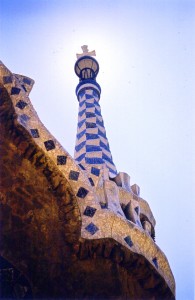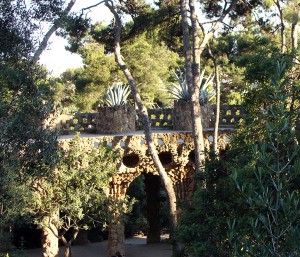In Part 3 of “The Fallen Traveller” death becomes possible in the aftermath of a young man’s startling fall.
3. Following the Fall
 There is no sound. One of the young women yelps and yelps like a struck dog. She is calling her companion’s name. No sound other than this. Then the most mundane and horrible of sounds, falling objects doing what they must – amid the clattering stones, a thud. I run as fast as gravity will throw my body along the viaduct and down the hillside because in the moment before I reach the man, he might still be alive. He might get up, dust himself off and laugh about the close call. Because having never witnessed a violent death before, I lack the experiential vocabulary to know he could be dead. I rush toward the victim and as in dreams imagine I will never arrive. Down the hillside, along a shortcut, onto the walkway below to…
There is no sound. One of the young women yelps and yelps like a struck dog. She is calling her companion’s name. No sound other than this. Then the most mundane and horrible of sounds, falling objects doing what they must – amid the clattering stones, a thud. I run as fast as gravity will throw my body along the viaduct and down the hillside because in the moment before I reach the man, he might still be alive. He might get up, dust himself off and laugh about the close call. Because having never witnessed a violent death before, I lack the experiential vocabulary to know he could be dead. I rush toward the victim and as in dreams imagine I will never arrive. Down the hillside, along a shortcut, onto the walkway below to…
The moment I saw the man lying there not ten paces away amidst the crumbled stone – on his side with his legs in a relaxed position, one arm beneath him and a dark pool flowing down the slope of the walkway as if bottles of wine had smashed – death became possible. As if to illustrate the way clichés germinate from a kernel of truth, time stood still until all the impossibilities and the two young women from the bridge caught up with us.
I yelled, calling out two English words for what I hoped was their universality. “Emergency, emergency!” Then, “Phone, phone!” Stupid, miserly us for considering a mobile phone a luxury. People gathered. Young people, all of them. They stood and looked on. Some looked at the young man. Some looked at me as I yelled. Others shielded the eyes of companions. Young people walked toward the screaming – the girl’s and my own – young people with phones.
 A couple stood before me. The man held a phone. They’d understood. In some language both of us spoke, he asked me what he should do. “9-1-1,” I told him. He described in broken English to someone on the other end that a man had fallen – I remember he struggled for the word “fall” – “in… in… Barcelona.” He didn’t know where he was any more specifically than that.
A couple stood before me. The man held a phone. They’d understood. In some language both of us spoke, he asked me what he should do. “9-1-1,” I told him. He described in broken English to someone on the other end that a man had fallen – I remember he struggled for the word “fall” – “in… in… Barcelona.” He didn’t know where he was any more specifically than that.
“Park…” I started and suddenly I’d forgotten too. I cursed my faltering memory and slowing recall – I’d turn 50 in four months. Mortality was ever more frequently on my mind, the need to make my life meaningful, to make a story from it, an increasingly powerful desire. I looked to the young woman. Together we struggled, “Park… Park… Je, Je, Jew… ick. Park Jewick.” The young man repeated the words into the phone and added, “Very bad, very bad.” I told him to say “Ambulance, ambulance, ambulance.” I repeated the word until he hung up without saying it himself. Later, I thought how I should have taken the phone from him and spoken to the 9-1-1 operator myself. But he hung up and made me understand that the police were on their way.
I stepped away from the young couple and toward the victim, thinking there might yet be something more I could do, but I could not bring myself to close that gap. One of his two female companions rushed past me, hesitated, then stooped to him. It was with delicate uncertainty she took his head in her hands. The blood did not stop her as it had me. She held his head. Suddenly, his eyes fluttered and his mouth convulsed as if he might vomit and awaken, then he was still again. His face pale against the stained stone. I turned away in my fear of death.
 I turned away because I felt like an intruder on this most private of moments between two people – the way the girl held the man’s head, the hope, the fear, the desperation in that posture – I sensed such intimacy should go unbroken. I knew the moment well because I’d been reading about it for days in The New Life, the novel by Turkish Nobel Prize winner Orham Pamuk that I’d brought on the trip for reading material.
I turned away because I felt like an intruder on this most private of moments between two people – the way the girl held the man’s head, the hope, the fear, the desperation in that posture – I sensed such intimacy should go unbroken. I knew the moment well because I’d been reading about it for days in The New Life, the novel by Turkish Nobel Prize winner Orham Pamuk that I’d brought on the trip for reading material.
“I read a book one day and my whole life was changed.”
So opens Pamuk’s novel in which the protagonist is driven by a book he’s just read to seek out accident scenes. He rides overnight buses in hopes he’ll see or better yet be involved in a second deadly bus crash, having survived a first already. The book he’s read has shown him the truth, that life is only possible to know at the moment before death. At that in-between moment, the two states collide and the contrast lays bare the beauty of life. As he explains in the bloody aftermath of the first bus crash, “I was both here and there… present in an eternal night and also in time that flowed away inexorably.”
Continued from:
The Fallen Traveller, Part I – Gaudi and the Fall
The Fallen Traveller, Part 2: Honeymoon and the Cathedral
Continues in:
The Fallen Traveller, Part 4: The New Life
The Fallen Traveller, Part 5: Writing the Story
Reference
The New Life by Orham Pamuk, p. 47
Photo Credits
“Spire – Parc Guell” Steven Velasco @ Flickr.com. Creative Commons. Some Rights Reserved.
“Viaduct in Parc Guell” © Darcy Rhyno. All Rights Reserved.
“Parc Guell” Aram K. @ Flickr.com. Creative Commons. Some Rights Reserved.


[…] The Fallen Traveller, Part 3: Following the Fall […]